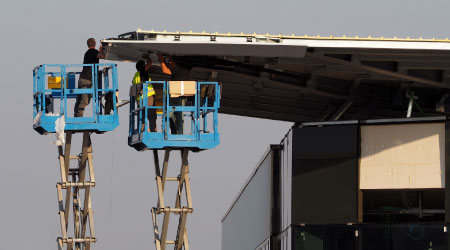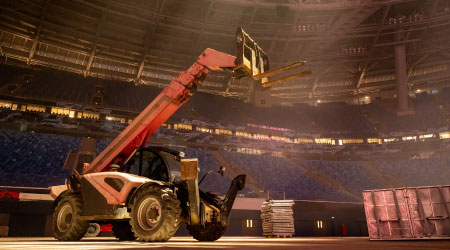Checklist for Specifying Lift Equipment
Whether the maintenance task at hand involves one-time use of lift equipment or a longer-term commitment, selecting the right product requires managers to answer a series of important questions:
- How many technicians does the equipment need to lift for the task? How much material?
- What load capacity, platform space and utility access does the task require?
- How far vertically and horizontally do technicians need to reach?
- Do they need to reach over and down or rotate materials or components?
- How will operators transport the lift? A wheeled or tracked self-propelled unit? Trailer? Pick-up truck? Forklift?
- Will the lift operate and be stored in one location?
- Will operators need to move the lift over uneven surfaces?
- Does the task call for a lift with leveling capability or load analysis?
- How wide and high are access points?
- Does the task call for alternating current or direct current electricity, or gas, propane or diesel fuel?
- Will technicians need to work over immovable objects, such as ramps, steps, auditorium seats, or roofs?
One proven specification strategy is to overlay the various lift-equipment options on a site plan to determine the vertical and horizontal coverage each lift under consideration provides without frequent relocation.
In the case of large jobs — for instance, if using a telehandler requires off-loading at a building-perimeter staging area and using other means and more time and labor to move material to the job — it might pay to use a self-erecting crane with the necessary reach and lifting capacity to move the material to the point of use from a single set-up position.
Related Topics:















